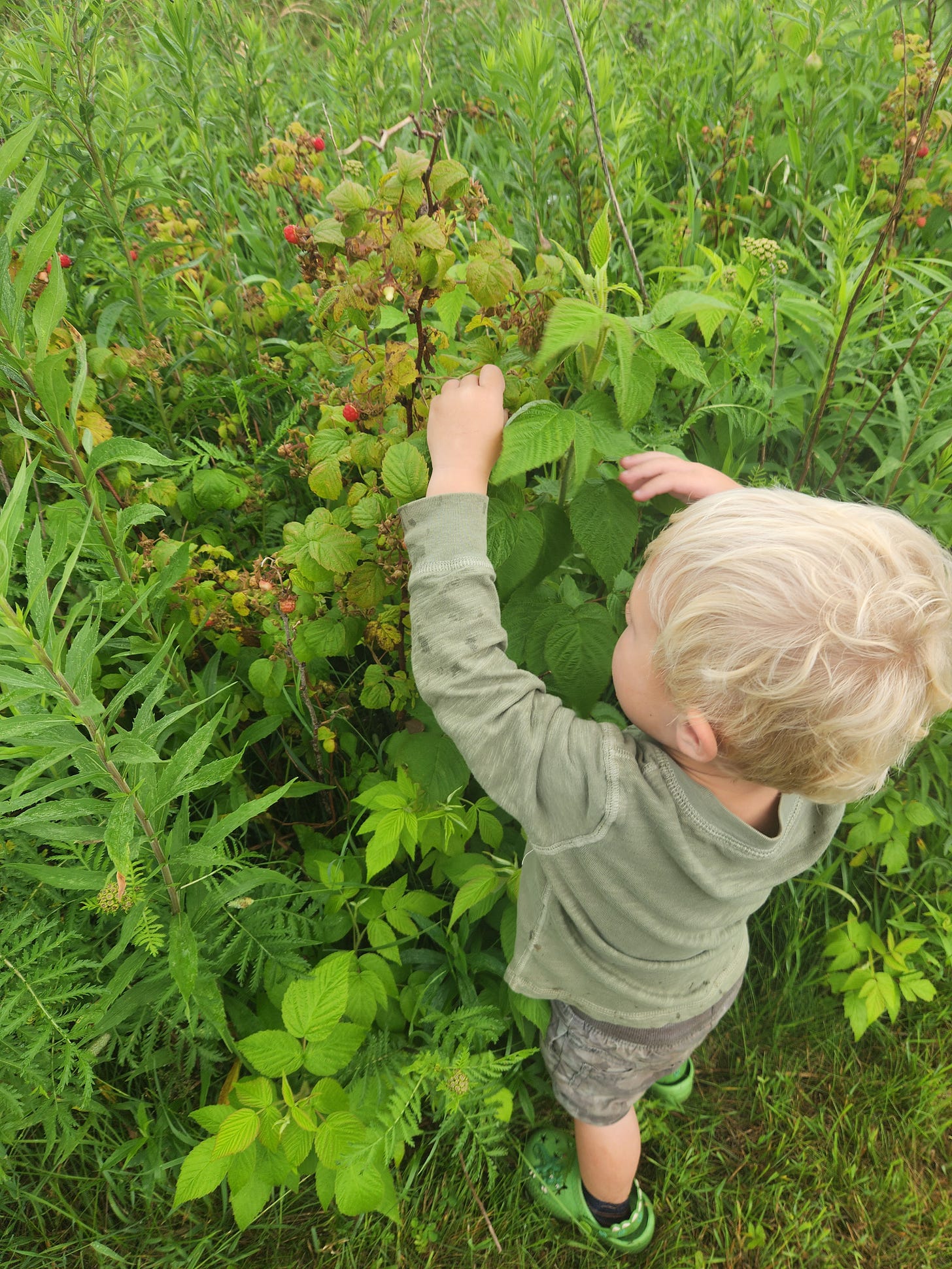Slowing Down
How to slow down and connect with nature these last few weeks of summer
When I discovered the poet Mary Oliver I was immediately drawn to her prose. She seems to capture life’s moments perfectly, succinctly, beautifully. I encourage everyone to explore her poetry, especially if they are a fellow nature-lover.
This post is inspired by Oliver’s short essay, “Upstream,”
“Teach the children. We don't matter so much, but the children do. Show them daisies and the pale hepatica. Teach them the taste of sassafras and wintergreen. The lives of the blue sailors, mallow, sunbursts, the moccasin flowers. And the frisky ones – inkberry, lamb's-quarters, blueberries. And the aromatic ones – rosemary, oregano. Give them peppermint to put in their pockets as they go to school. Give them the fields and the woods and the possibility of the world salvaged from the lords of profit. Stand them in the stream, head them upstream, rejoice as they learn to love this space they live in, its sticks and leaves and then the silent, beautiful blossoms.
Attention is the beginning of devotion.”
―Mary Oliver, Upstream: Selected Essays
This essay moves me every time I read it. It’s changed how I approach nature walks with my son and how I choose what to help him grow in the garden. If you’re inspired by this essay but don’t know how to get started, here are some tips:
Nature Walks
“Teach them the taste of sassafras and wintergreen….Give them the fields and the woods…Stand them in the stream, head them upstream, rejoice as they learn to love this space they live in, its sticks and leaves and then the silent, beautiful blossoms.”
I use the apps iNaturalist and Merlin nearly everyday. Merlin is a bird identification app, you can identify birds by taking a photo, recording their song, or even just describing their appearance. My son and I like to record the bird songs together and listen for matches. The other app, iNaturalist, helps us identify native plants. I feel we build a closer connection to the earth when we can identify the plants that are around us. Our society is also experiencing “plant blindness”, where many of us have stopped noticing and maybe even caring about the plants around us. Our mental health is strengthened when we connect with the Earth. Older children can use Seek, which is a simplified, more user-friendly version of iNaturalist. Make sure to use these apps together. If you want to be technology-free, there are many identification handbooks that can be stored in a bag during your walk.
Next, I recommend child-led nature walks. Go into the park or nature area without a set path. Allow your child to choose the route and let them linger and explore. Point out interesting moss or lichen, listen to the rustling of birds or other wildlife, and admire the tallest trees and the smallest flowers. It can be relaxing to go out into the woods without a set purpose, other than to just see and experience what’s out there.
In daily life, just make even a little bit of time, everyday, for unstructured time outdoors. In today’s fast-paced world, we tend to over-structure everything. Our children are spending more time in structured activities (like organized sports and extracurriculars) than ever before. Give them time to rest. Away from screens, away from adults. With a toddler, I always keep my eye on him - but I give him space to wander the yard and explore independently. I notice that’s when his imagination really flourishes!
In the Garden
“Teach them the taste of sassafras and wintergreen. The lives of the blue sailors, mallow, sunbursts, the moccasin flowers. And the frisky ones – inkberry, lamb's-quarters, blueberries. And the aromatic ones – rosemary, oregano. Give them peppermint to put in their pockets as they go to school.”
When I plan children’s gardens, I focus on high-sensory value plants. Herbs are always a win; most are naturally aromatic and tasty! I recommend lemon grass, mint, and lavender. Herbs like rosemary and oregano, as Oliver mentioned, tend to be more appreciated by older children - toddlers often turn up their noses at these.
Vegetable favorites are snap peas, beans, and tomatoes. I try to find stringless peas as they’re easier to bite right into. Cherry tomatoes make me a little nervous with toddlers because of the potential choking hazard. If you want to encourage independent exploration in the garden, choose a Roma or slicer tomato. Kids will bite into them like an apple, or I’ll slice them and add a bit of salt - yum! I’ll throw in some unique varieties, such as pink tomatoes or long beans, that invite children into the garden to explore.
Lamb’s-quarters, as Oliver mentions, are considered weeds where I live. We have them growing everywhere in our yard. We’ll do a little bit of foraging, but I’ll always explain that this is not done without an adult. Lamb’s-quarters, wood sorrel, and wild leeks are taste-tested. We also have wild strawberries and thimbleberries that are always exciting finds.
In Conclusion
I strongly recommend Mary Oliver. Her poetry and essays have gotten me through some difficult times and it is simply beautiful to experience.
“Attention is the beginning of devotion.”
I encourage you to take these last few, precious weeks of summer to slow down. Pay attention. Give yourself the gift of connecting with nature and lingering in the garden.
As always, happy gardening!




